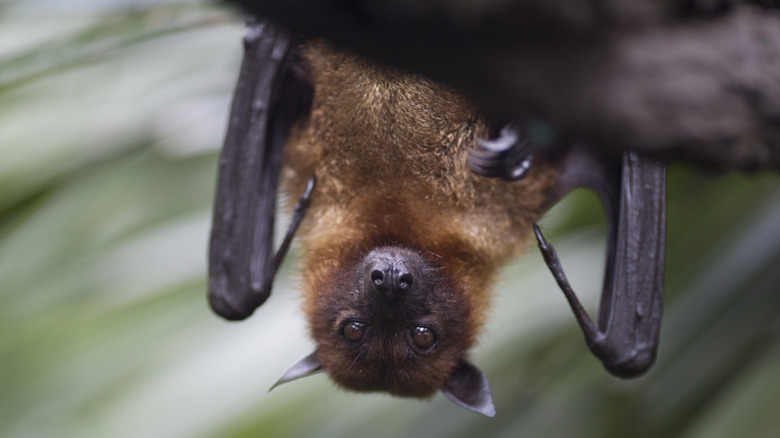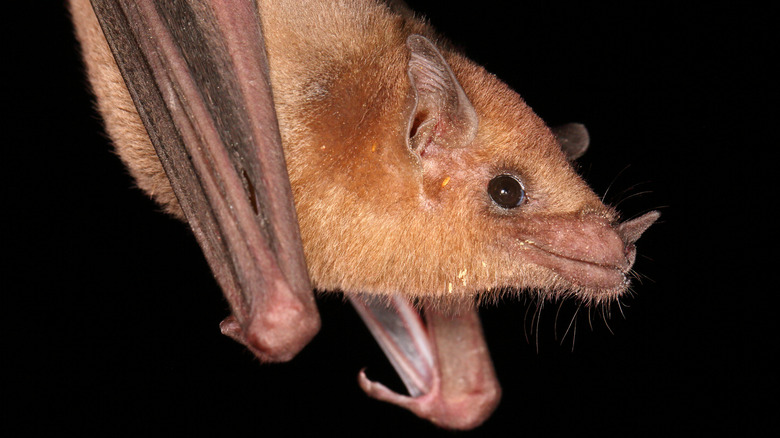Well Actually, Bats Aren't Blind
"As blind as a bat" is a lament you'll often hear in the presence of lost pairs of glasses, boneheaded referees, and anyone perceived as mentally oblivious, but if you call someone blind as a bat, you're actually saying they have perfectly normal eyesight. Contrary to popular belief, out of the over 1,300 bat species known to exist, not a single one is actually blind. The eyes of bats are generally small, and don't work in quite the same way human eyes do, but that doesn't mean they don't do their job perfectly well.
The misconception that bats are blind comes from the fact that, when talking about bats, we're always focusing on their ears. The most famous evolutionary adaptation of bats, aside from their wings, is the power of echolocation. To use echolocation, bats emit sound waves from their mouths and noses that we humans are unable to perceive because they fall in frequencies too high for our range of hearing. Those sound waves bounce off of the bat's surroundings and back to its ears, an echo that helps them recognize objects in their vicinity.
Bats aren't the only animals that use echolocation, but they are the most closely associated with it. Their massive ears stand as a symbol of this power, but our fascination with echolocation has led many to believe that bats are solely dependent on their ears, with their eyes being useless. In truth, they use both, and their eyes are even more advanced than ours in some ways.
Bats can see things humans cannot
Bats' quality of vision varies from species to species, but none can be said to be truly blind. Their eyes are adapted for low-light conditions, which is only appropriate, as nearly all bats are nocturnal, and they are well-known for occupying dark spaces such as caves. In fact, the largest bat colony in the world is in a cave in Texas, where they hide away during the daylight hours. In order to see in such conditions, bats need eyes that work quite differently from our own.
In the retina of an eyeball, there are two types of photoreceptor cells: rods, which react to the quantity of light in an environment, and cones, which react to different colored wavelengths of light and help to sharpen details. Bats have between 300,000 and 800,000 rods per square millimeter in their eyes, while humans have at most 150,000 per square millimeter. This allows bats to see in environments with much less light than humans can perceive.
Some bat species are blind in a way: colorblind. All vision studies conducted on bats show that they can see in the orange-red wavelengths of the color spectrum, but several species are unable to see the color blue because they lack a necessary pigment in their eyes. On the other hand, a handful of insectivorous bat species have been found to see ultraviolet wavelengths of light, something that we humans are blind to.

